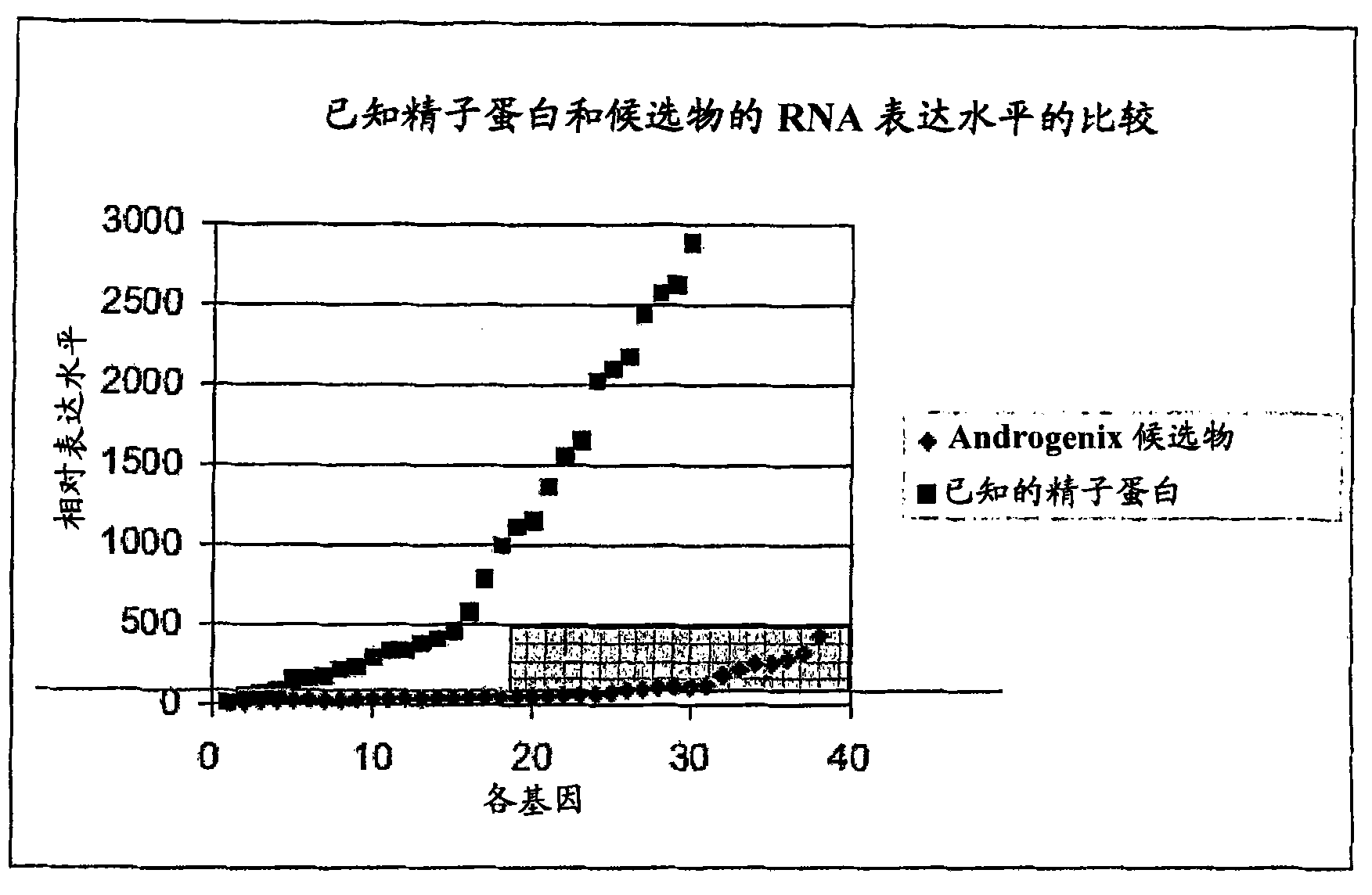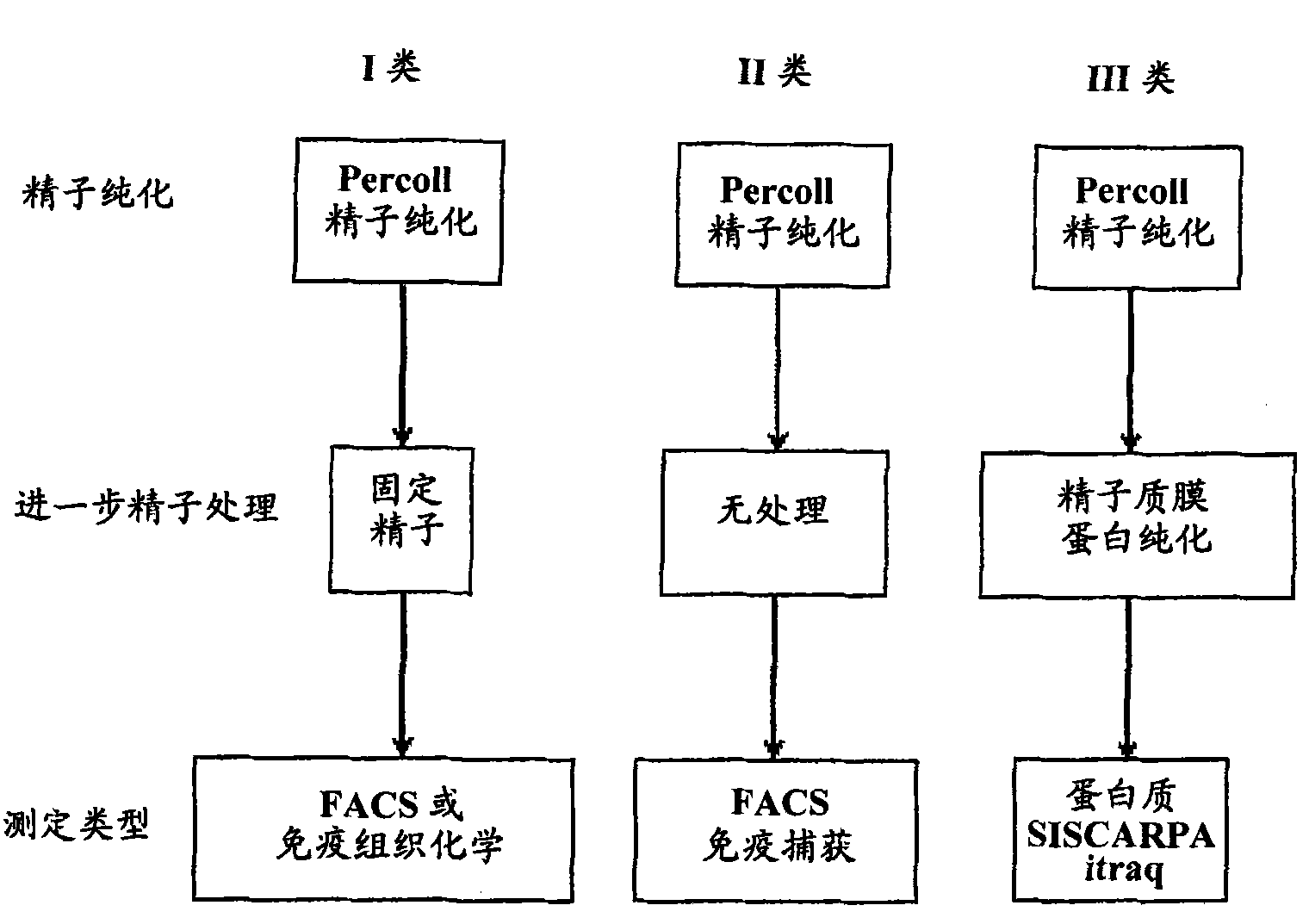Materials and methods for sperm sex selection
A sperm and semen technology, applied in chemical instruments and methods, material testing products, medical raw materials derived from mammals, etc., can solve problems such as difficult analysis, unsuccessful discovery, limited dynamic range, etc., and achieve high sensitivity and high specificity. Effect
- Summary
- Abstract
- Description
- Claims
- Application Information
AI Technical Summary
Problems solved by technology
Method used
Image
Examples
Embodiment 1
[0077] Identification of candidate genes by bioinformatics
[0078] The publicly available bovine genome (available at the Ensembl site; originally published August 14, 2006; updated version published February 2007) and the publicly available human genome were used in a genome-based approach to identify Differences in the surface of sexed spermatozoa. Specifically, candidate genes were selected using the Ensembl Biomart tool (available on the Ensembl site) and the following strategy:
[0079] 1) Using Biomart to identify bovine orthologs of human X-chromosome genes, which have transmembrane domains, and check by manual analysis;
[0080] 2) Identify genes that are present on the X chromosome and have a transmembrane domain in the bovine genome by Biomart, and check by manual analysis (unsequenced bovine Y chromosome); and
[0081] 3) Bovine orthologs of human Y chromosome genes with transmembrane domains were identified using Biomart and checked by manual analysis (contain...
Embodiment 2
[0084] Prioritize candidate genes based on expression levels
[0085] Each candidate gene identified in Example 1 was checked for splice variants and, if so, exons common to all transcripts were selected. If no suitable exons were present, exons unique to each transcript were selected for primer design. Exons were used for primer design, rather than skipping introns, so that all primers were tested on genomic DNA. Control primers were also designed to ensure that there was no genomic DNA in the cDNA. Primers were designed for real-time PCR using Primer3 software (available online from SourceForge) and a product size of 80-150 bp. All primers were checked using Blast software to verify that they could not prime elsewhere in the genome (i.e. at least the 3' terminal bases of the primers could not be matched). The designed primers were then used in reverse transcription PCR studies to analyze the expression of candidate genes in bovine testis tissue cDNA and bovine genomic D...
Embodiment 3
[0096] Prioritization of candidate genes based on subcellular localization
[0097] The low expression levels of candidate genes in round spermatids suggest that candidates should be given lower priority if they are present only on non-cell surface membranes. The reason for this is that the candidate is very difficult to detect as it is already under-expressed, which in turn is only present in a low percentage of the protein on the surface. Candidate genes or their orthologs in other species are therefore tested to determine the subcellular location of the gene product. If evidence is obtained that the protein is on a membrane system other than the cell surface, then that candidate will be given lower priority. This data was combined with round spermatid expression data to generate 4 gene classes with different priorities, with class I being the highest priority. Each of the Class I bovine candidate genes identified in Table 4 below has the following characteristics:
[009...
PUM
| Property | Measurement | Unit |
|---|---|---|
| molecular weight | aaaaa | aaaaa |
Abstract
Description
Claims
Application Information
 Login to View More
Login to View More - R&D
- Intellectual Property
- Life Sciences
- Materials
- Tech Scout
- Unparalleled Data Quality
- Higher Quality Content
- 60% Fewer Hallucinations
Browse by: Latest US Patents, China's latest patents, Technical Efficacy Thesaurus, Application Domain, Technology Topic, Popular Technical Reports.
© 2025 PatSnap. All rights reserved.Legal|Privacy policy|Modern Slavery Act Transparency Statement|Sitemap|About US| Contact US: help@patsnap.com



